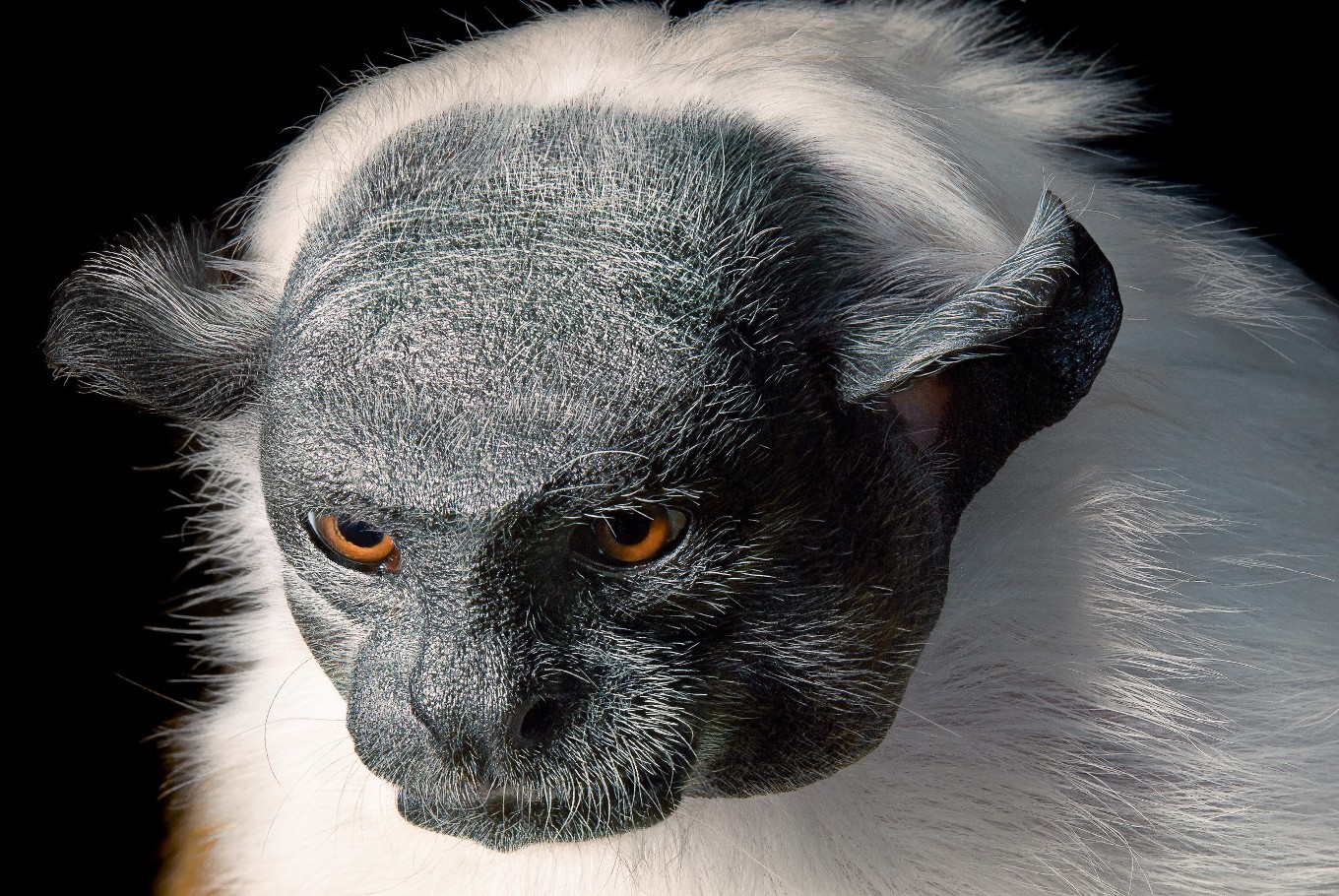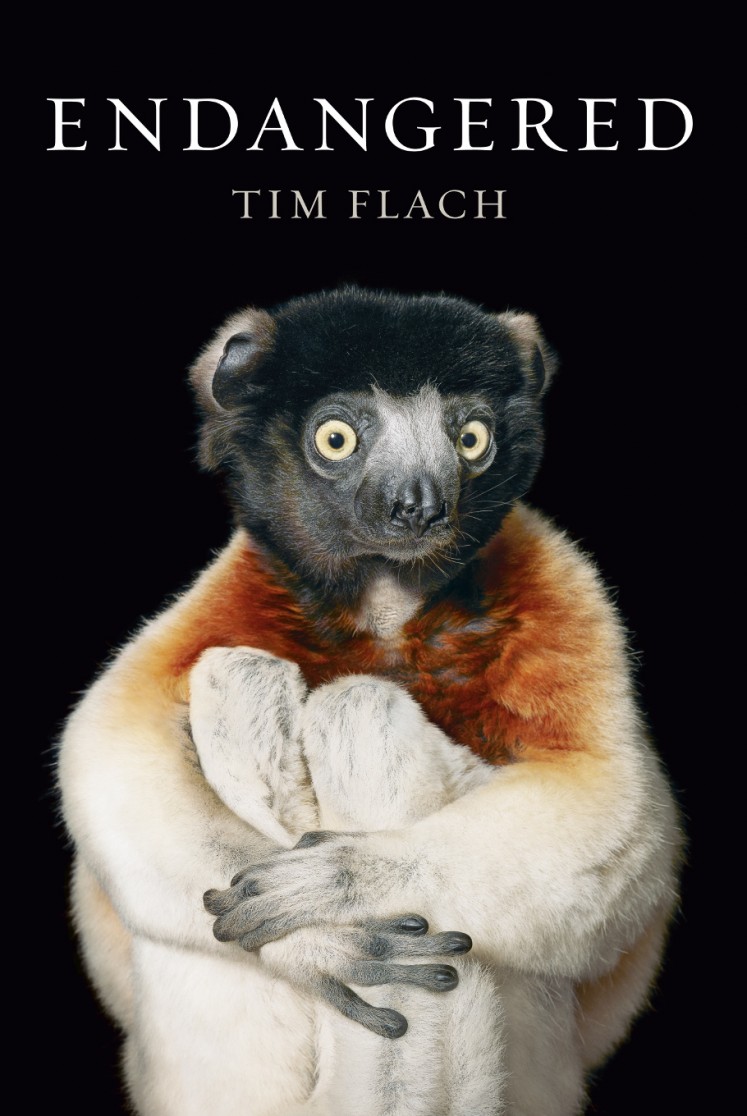Popular Reads
Top Results
Can't find what you're looking for?
View all search resultsPopular Reads
Top Results
Can't find what you're looking for?
View all search resultsPhotographer captures human face of endangered species
A new book by British photographer Tim Flach documents some of Earth's most treasured species pushed to the brink of extinction by manmade crises, from pangolins hunted for their scales to Brazil's pied tamarin threatened by urbanisation.
Change text size
Gift Premium Articles
to Anyone
 An Pied Tamarin is photographed by Tim Flach in this picture part of the book 'Endangered'. Flach used a black velvet backdrop in many of his prints 'because I want you to focus on the animal,' he explained to an AFP journalist in Wahington on November 13, 2017. The collection of more than 150 images featured in 'Endangered,' a tome released by US publisher Abrams, spans the spectrum of International Union for Conservation of Nature rankings from not evaluated and vulnerable to critically endangered and extinct in the wild. (ABRAMS / AFP/Tim Flach)
An Pied Tamarin is photographed by Tim Flach in this picture part of the book 'Endangered'. Flach used a black velvet backdrop in many of his prints 'because I want you to focus on the animal,' he explained to an AFP journalist in Wahington on November 13, 2017. The collection of more than 150 images featured in 'Endangered,' a tome released by US publisher Abrams, spans the spectrum of International Union for Conservation of Nature rankings from not evaluated and vulnerable to critically endangered and extinct in the wild. (ABRAMS / AFP/Tim Flach)
Can you love an animal to death?
A new book by British photographer Tim Flach documents some of Earth's most treasured species pushed to the brink of extinction by manmade crises, from pangolins hunted for their scales to Brazil's pied tamarin threatened by urbanisation.
"Most of the changes in the past have been driven by natural forces, but on this occasion, it seems to be driven by us," Flach told AFP on a visit to Washington.
London-based photographer Tim Flach poses with his book 'Endangered' November 13, 2017 in Washington, DC. As a child, Tim Flach would immerse himself in the outdoors, becoming so attuned to the natural world that he could feel a bee's energy as it streaked by while he sketched in a corn field. This same sense of hyper-awareness of the natural world drove the British photographer to document some of the most threatened species across the globe, from pangolins hunted for their scales to great white sharks swimming off the Galapagos Islands. (AFP/Brendan Smialowski)
"My real question is: 'Why am I here doing it? Why am I here taking a picture of the last male white rhino?' It's the question of how we got to that point, rather than simply one of wonderment."
Coral, insects and even some ecosystems are included alongside some of the most recognizable threatened mammals such as polar bears and lesser-known creatures like harlequin toads.
The panda is one of the least vulnerable species found in the more than 150 images of "Endangered," whose release coincides with a new exhibition of Flach's photos in London's Osborne Samuel Gallery.
Flach, known for his highly stylized photographs of dogs and horses, captures the animals' almost human expressions.
Read also: Newly discovered orangutan species is most endangered great ape: study
A crowned sifaka lemur hugs his knees toward his chest on the book cover of Tim Flach's 'Endangered', Flach used a black velvet backdrop in many of his prints 'because I want you to focus on the animal,' he explained to an AFP journalist in Wahington on November 13, 2017. The collection of more than 150 images featured in 'Endangered,' a tome released by US publisher Abrams, spans the spectrum of International Union for Conservation of Nature rankings from not evaluated and vulnerable to critically endangered and extinct in the wild. (ABRAMS / AFP/Tim Flach)On the book's cover, a crowned sifaka lemur hugs his knees toward his chest, his bright yellow eyes betraying a worried yet inquisitive look, like a reprimanded schoolboy.
Flach, 59, often uses a black velvet backdrop and his lighting captures colors in such detail that one can almost feel the softness of the lemur's black, orange and white fur.
In the summer, Flach trekked to Russia's Caspian Sea, hiding in a "fly-infested hole" in search of the saiga antelope, an Ice Age survivor that once roamed alongside woolly mammoths but could soon be wiped out by poachers preying on its twisted horns.
Flach could only get a good sighting of the females, so he returned in the dead of winter with the longest lens he could borrow from Canon and got just one shot.
A Shoebill looks straight into Tim Flach's camera in this picture part of the book 'Endangered'. Flach used a black velvet backdrop in many of his prints 'because I want you to focus on the animal,' he explained to an AFP journalist in Wahington on November 13, 2017. The collection of more than 150 images featured in 'Endangered,' a tome released by US publisher Abrams, spans the spectrum of International Union for Conservation of Nature rankings from not evaluated and vulnerable to critically endangered and extinct in the wild. (ABRAMS / AFP/Tim Flach)Other encounters during a two-year odyssey included staring the last male white rhinoceros in the eye and swimming with great white sharks off the Galapagos Islands.
He hopes that others share his passion for wildlife.
"If we care about something, we are more likely to take action," said Flach.













